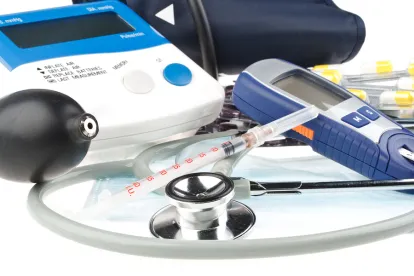FDA announced the availability of a new draft guidance in last Friday’s Federal Register that Commissioner Gottlieb explains describes FDA’s policy on public warning and recall notifications, which “gives industry clear direction on how to navigate and work with the FDA to make sure recalls are communicated promptly,” and “will empower consumers by providing more timely and more accurate information on recalled products.” The guidance applies to all FDA-regulated products--foods, drugs, medical devices, and cosmetics.
FDA states that the draft guidance is the first step in the Commissioner's larger commitment to improve FDA’s recall process, which FDA released in response to a December OIG Report concluding that FDA did not always have an efficient and effective food recall process. The broader plan will include, among other things, a new policy on the information FDA will make available to consumers to help them identify a “hazardous recalled food” and a new approach to the release of recall information. Commissioner Gottlieb states that in the interim, “FDA can and will publicize . . . information if it is necessary to effectuate a recall.”
As part of its efforts to publicize key recall information, FDA also announced on the same day a new approach it has already initiated to post recalls in its Enforcement Report before making a final health risk determination (e.g., before classifying the recall). FDA will identify these unclassified recalls as “not-yet-classified” (for human drugs, foods, and veterinary products), while it continues its classification determination. FDA concludes that this approach benefits the public by providing recall information as soon as possible.
Highlights of the draft guidance, “Public Warnings and Notification of Recalls Under 21 CFR Part 7, Subpart C”
FDA’s draft guidance explains FDA’s current thinking on those factors companies should consider before deciding whether to issue public warnings in recall situations, the general timeline for issuing warnings, the information to include in a public warning, and situations in which FDA may issue its own public warning if a company’s warning is insufficient. Food, Drugs, and Devices 2 FDA typically expects public warnings in Class I recalls, and in some particularly urgent Class II recalls. The draft guidance identifies the following as examples of recalls for which a public warning may be appropriate:
-
When retail level consignees cannot identify persons to whom a recalled prescription drug or medical device was dispensed;
-
When recalled medical devices may malfunction and cause incorrect dosing;
-
When a recalled product has been widely distributed;
-
When a food product is recalled after consumer reports of illness or injury;
-
When a recalled food product is more likely to be consumed by vulnerable populations;
-
When manufacturing deviations present significant health risks (e.g., botulism).
In other recalls, a public warning may NOT be necessary:
-
When recalled products have (1) only been distributed to direct accounts, and (2) records show exactly where the product has gone, such that (3) prompt oral communication can be made (usually this means the product has only been distributed to a warehouse, but for internet purchases, the consumer is considered a direct account)
-
When, despite being a Class I recall, a public warning would not be beneficial because the available information is inadequate to convey risk and explain appropriate actions to be taken (e.g., during a medical device recall, FDA will consider how patients would respond to a public warning about a defective product without first being able to consult with their physician).
FDA’s draft guidance also advises that public warnings should NOT:
-
Contain content that detracts from the purpose of the warning;
-
Promote the qualities of the product being recalled;
-
Minimize the hazard by using qualifiers such as “out of an abundance of caution”;
-
Fail to adequately identify the recalled product, the health hazard, and the product’s distribution;
-
Fail to reach the target audience (e.g., if no Spanish translation was provided for a product used largely by Spanish-speaking populations).
FDA also notes that even in some Class I recalls, a public warning may be more confusing than helpful, such as where there is not adequate information to convey risk and appropriate actions and when the product is limited to a small number of users that are easily identified and can be rapidly reached through targeted contact.
FDA generally expects companies to prepare and issue their own public warnings, which FDA may review and comment on if submitted to FDA in advance. If FDA determines that a company’s public warning is deficient, it may request that the company revise or reissue the warning, and/or FDA may issue its own public warning.
Companies may want to consider how to incorporate FDA’s suggested approach in the draft guidance and its broader recall initiative when facing a recall situation, in assessing whether to Food, Drugs, and Devices 3 issue a public warning, ensuring sufficient dissemination of appropriate recall information, and determining when to engage FDA. Companies who wish to submit comments on FDA’s draft guidance may do so at any time, but the initial comment period closes Tuesday, March 20, 2018.







 />i
/>i

